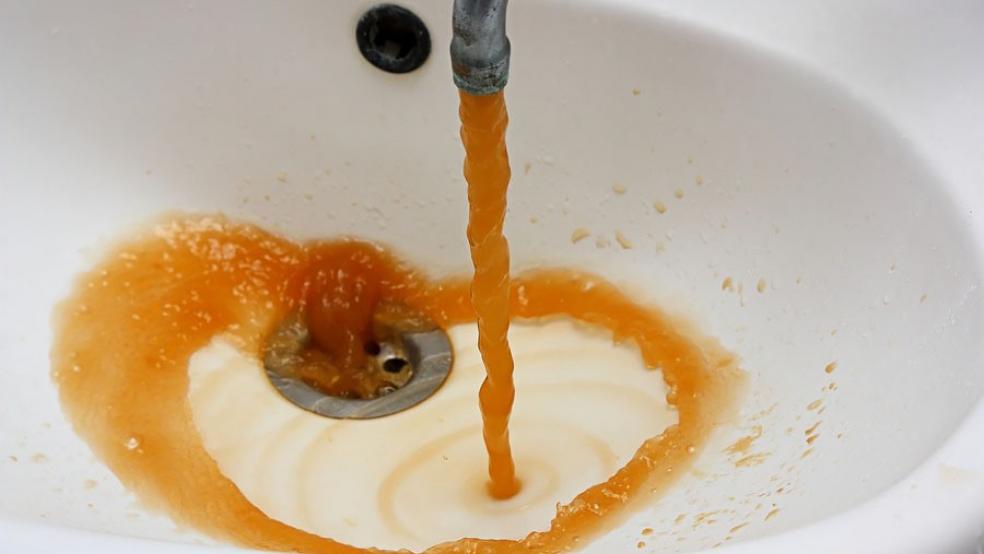Many eyes will be on the drinking water crisis in Flint, Mich., next weekend when Democratic presidential candidates Hillary Rodham Clinton and Sen. Bernie Sanders use the beleaguered city as the backdrop for a nationally televised debate.
The Democratic candidates have made the emergency over lead-contaminated drinking water in the city of nearly 100,000 mostly poor and minority residents a cause celebre. The biggest concern is that an estimated 8,000 children under the age of six may have been exposed to lead in Flint’s water during the past year – and possibly suffered brain impairment -- while city, state and federal officials put in charge of the municipal water system may have covered up the problem or been slow to respond.
Related: How the Flint Drinking Water Crisis Became a Political Punching Bag
Sanders, the socialist presidential candidate from Vermont, has called for Republican Michigan Gov. Rick Snyder to resign over Flint’s lead-contaminated water supply. He called it “one of the worst public health crises in the modern history of this country.”
But for all the deserved attention Flint’s struggling residents are receiving, the problem of high levels of lead in municipal drinking water is unfortunately an all too common occurrence.
Just last Wednesday, Mississippi state authorities cautioned that pregnant women and young children in the city of Jackson – the state capital -- should refrain from drinking unfiltered tap water because of the high levels of lead that have been discovered.
Lead is a metal that can cause behavior problems and learning disabilities in infants and children. State health officials notified Jackson in January that 22 percent of water samples taken from homes last June had tested above dangerous levels. Some of the lead levers were as high as eight times the federal level of 15 parts per billion, according to the Associated Press. City officials blame the problem on old, unsafe plumbing in individual homes.
Related: Flint’s Drinking Water Crisis Just Got More Toxic with Legionnaire’s Disease
Tony Yarber, the mayor, and other city officials repeatedly sought to downplay comparisons between Jackson’s problems and those of Flint, where the lead poisoning of the drinking water went undetected – or unacknowledged – for well over a year. "We're not just like Flint," Sheila Byrd, a spokesperson for the mayor, told Mississippi reporters.
It should come as little surprise that many other cities are suffering similar problems in the face of the nation’s aging infrastructure. While lawmakers and policy makers typically focus their attention on dilapidated highways, bridges and mass transit, the problem of aging and corroding water pipes and systems pose serious public health problems.
Flint residents first began complaining in April 2014 after the emergency financial manager appointed by Gov. Snyder ordered a switch from Lake Huron to the Flint River as the source of the city’s drinking water. When the highly acidic Flint River water wasn’t properly treated, it corroded old underwater pipes that began leaching lead into the water system. By last March – with residents up in arms – the city government voted to switch back to the old source of water used by the city of Detroit, but by then it was too late.
Other cities have had similar – albeit less dramatic -- problems with ancient pipes and storage systems that are prone to mishaps or calamities.
Related: Michigan governor to request federal aid in Flint water crisis
For example, routine laboratory tests last August in Sebring, Ohio, turned up unsafe levels of lead in the town’s drinking water after workers stopped adding a chemical to keep lead water pipes from corroding, according to The New York Times. It took five months before city officials warned pregnant women and children not to drink the water and to shut down taps and drinking fountains in the schools.
A similar problem with lead arose in 2001 in Washington, D.C., the nation’s capital, after public works officials changed how they disinfected drinking water. The levels of lead in the tap water of thousands of homes shot up by as much as 20 times the federally approved level. Yet many residents didn’t find out about this problem for three years.
There have been other examples of this over the past decade. It took more than three years before testing in 2014 finally confirmed that drinking water in Brick Township, N.J., an ocean side community of 75,000, contained excess lead levels in many homes.
The Times reported that despite these and other problems, federal officials and many scientists agree that the majority of the country’s 53,000 community water systems provide safe drinking water. But episodes likes those in Sebring and Washington “are unsettling reminders of what experts say are holes in the safety net of rules and procedures intended to keep water not just lead-free, but free of all poisons,” the newspaper reported.
Related: Federal officials probe lead-tainted water in Flint, Michigan
One of the more glaring loopholes is an EPA lead regulation that requires water systems to test in only a small number of homes with lead pipes – usually 50 to 100 for larger systems. Sometimes the intervals between testing can stretch by as much as three years. By then, many residents could have consumed unhealthy lead levels.





